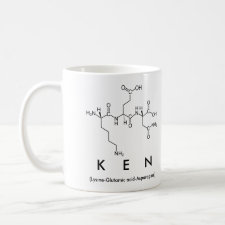
Authors: Shimizu KD, Umpleby RJ
Article Title: Selective chemical modification of molecularly imprinted polymers.
Publication date: 2001
Journal: Abstracts of Papers of the American Chemical Society
Volume: 221
Issue: (MSE)
Page numbers: 469.
Abstract: Molecularly imprinted polymers (MIPs) are crosslinked materials with recognition abilities for a template molecule. The binding sites in MIPs are heterogeneous, encompasing a wide range binding affinities. Presented is the chemical modification of MIPs, using a guest molecule as a selective in situ protecting group. The guest preferentially bound to the high affinity sites, and the exposed low affinity sites were esterified, leading to improvements in homogeneity and average binding affinities. Essential to the strategy was the measurement of the affinity distribution (number of binding sites versus association constant) for each polymer. The affinity distributions enabled verification as well as optimization of the selective chemical modification process, by quantification of the numbers of high and low affinity sites



Join the Society for Molecular Imprinting

New items RSS feed
Sign-up for e-mail updates:
Choose between receiving an occasional newsletter or more frequent e-mail alerts.
Click here to go to the sign-up page.
Is your name elemental or peptidic? Enter your name and find out by clicking either of the buttons below!
Other products you may like:
 MIPdatabase
MIPdatabase









